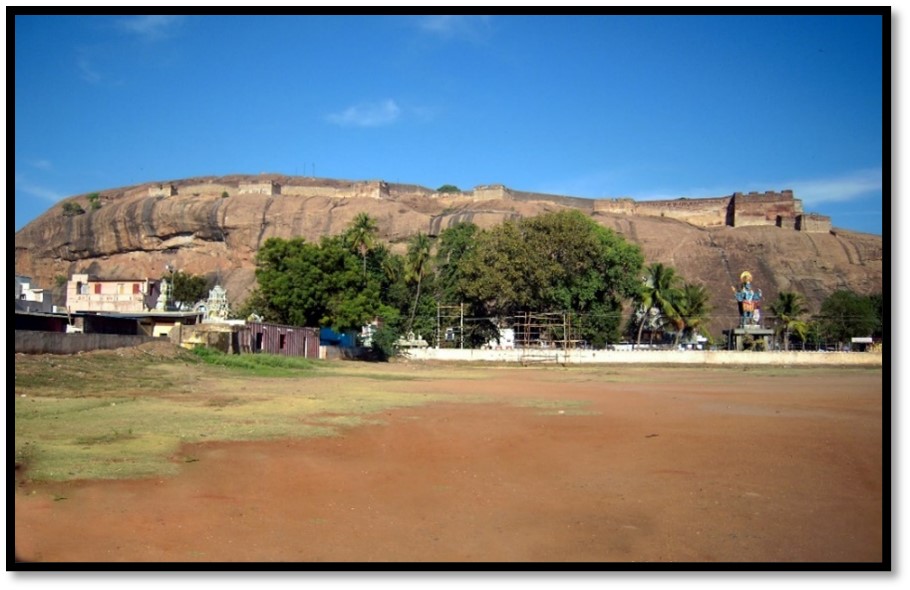This place is strategically located overlooking the valley through which the forces from Karnataka country gained access in to the Madurai country during late medieval period. The first fortification on this rock, a prominent elevated place overlooking the valley, was possibly erected by the Nayaks of Madurai in order to defend their country from the invading Mysore army. However, Haider Ali seems to have rebuilt the fort substantially as he used this as a launching pad to attack the Britishers in this region during the Carnatic wars. The Britishers finally captured the fort in 1790 and garrisoned it till 1860. The irregular curtain wall of the fort is well built of dressed and finely jointed stone blocks with brick crenellations. There are number of cells in the rampart for the use of troops. There is a circular free-standing bastion on the top at an advantageous location on whichseveral cannons were mounted. The one now preserved is of English origin. There are number of brick structures on the top possibly built by the Britishers. Vijayanagara rulers as indicated by the inscriptions built the temples on the summit. Among them, the central shrine is noteworthy for the delicately carved architectural members and the moulded brick elements of the superstructure. The style of carving recalls the influence of dying delicate artisitic traditions on soapstone of Karnataka. One of the inscriptions on a shrine records a donation by the Vijayanagara king Krishnadevaraya to the Tambiranar (the presiding deity) of Dindigul. |

